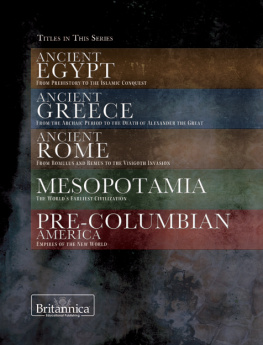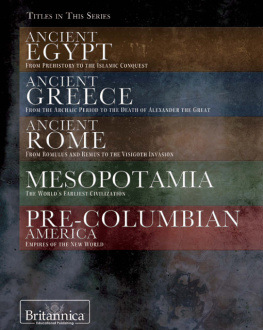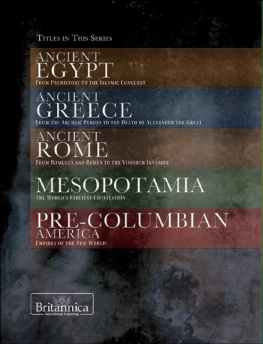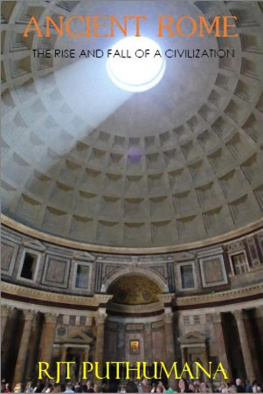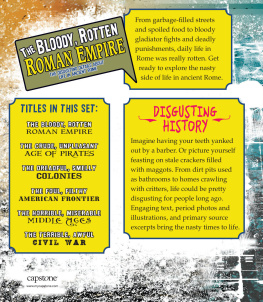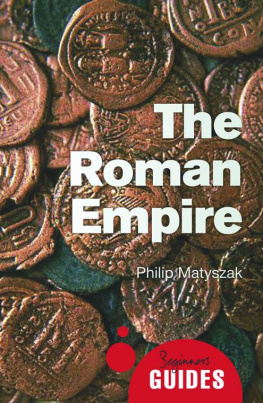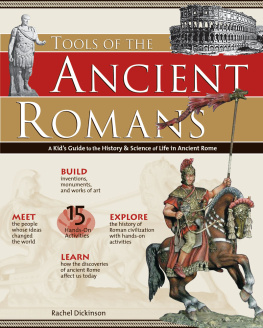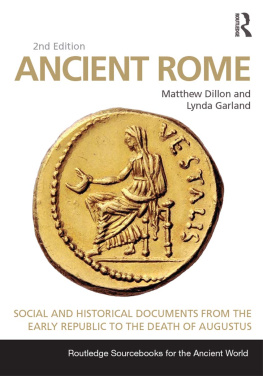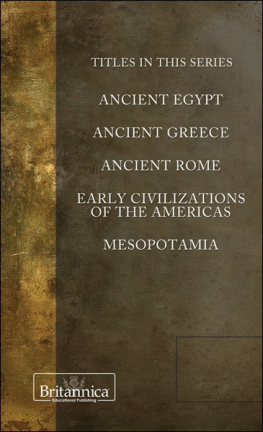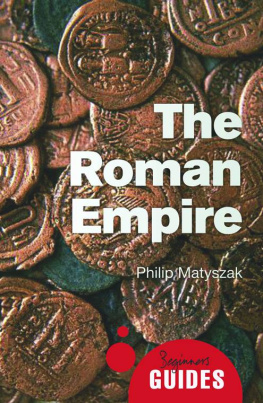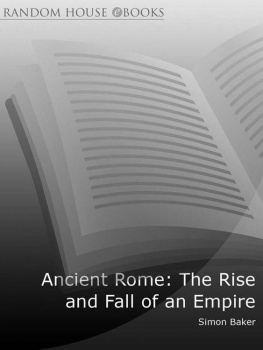ANCIENT ROME
FROM ROMULUS AND REMUS TO THE VISIGOTH INVASION
THE BRITANNICA GUIDE TO ANCIENT CIVILIZATIONS
ANCIENT ROME
FROM ROMULUS AND REMUS TO THE VISIGOTH INVASION
EDITED BY KATHLEEN KUIPER, MANAGER, ARTS AND CULTURE

Published in 2011 by Britannica Educational Publishing
(a trademark of Encyclopdia Britannica, Inc.)
in association with Rosen Educational Services, LLC
29 East 21st Street, New York, NY 10010.
Copyright 2011 Encyclopdia Britannica, Inc. Britannica, Encyclopdia Britannica,
and the Thistle logo are registered trademarks of Encyclopdia Britannica, Inc. All
rights reserved.
Rosen Educational Services materials copyright 2011 Rosen Educational Services, LLC.
All rights reserved.
Distributed exclusively by Rosen Educational Services.
For a listing of additional Britannica Educational Publishing titles, call toll free (800) 237-9932.
First Edition
Britannica Educational Publishing
Michael I. Levy: Executive Editor
J.E. Luebering: Senior Manager
Marilyn L. Barton: Senior Coordinator, Production Control
Steven Bosco: Director, Editorial Technologies
Lisa S. Braucher: Senior Producer and Data Editor
Yvette Charboneau: Senior Copy Editor
Kathy Nakamura: Manager, Media Acquisition
Kathleen Kuiper: Manager, Arts and Culture
Rosen Educational Services
Jeanne Nagle: Senior Editor
Nelson S: Art Director
Cindy Reiman: Photography Manager
Matthew Cauli: Designer, Cover Design
Introduction by Laura Loria
Library of Congress Cataloging-in-Publication Data
Ancient Rome: from Romulus and Remus to the Visigoth invasion / edited by Kathleen
Kuiper.1st ed.
p. cm.(The Britannica guide to ancient civilizations)
In association with Britannica Educational Publishing, Rosen Educational Services.
Includes bibliographical references and index.
ISBN 978-1-61530-207-9 (eBook)
1. RomeHistory. I. Kuiper, Kathleen.
DG209.A55 2010
937dc22
2009045443
On the cover: A phalanx of statues, currently housed in the Vatican Museum, stand as silent witnesses to the grandeur of ancient Rome. Ian Shive/Aurora/Getty Images
Photo credit pp. Hulton Archive/Getty Images
CONTENTS











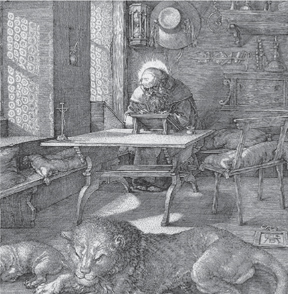
INTRODUCTION

Detail of Roman soldiers, taken from the carving Martyrdom Of St Paul, which can be found in the Chapel Of Sisto IV in the Vatican. Hulton Archive/Getty Images
A ncient Romes influence cannot be overstated. The English language, government, and culturefrom basics such as the alphabet and calendar to more sophisticated legal systemsare so heavily saturated with Roman traits that it is impossible to imagine what the world would be like if Rome had not flourished.
Any civilization whose influence reverberates so strongly around the globe thousands of years after its fall deserves a closer look, and that is what this book provides. Ancient Rome: From Romulus and Remus to the Visigoth Invasion transports readers back to a time of intrigue, conquest, invention, and empire building. Readers also will be introduced to the Caesars, warriors, senators, patricians, and plebeians who built, governed, conquered, and inhabited the ever-expanding territories under Roman rule.
From its mythical founding by Romulus on Palatine Hill, Rome had devised a political and social framework from which the empire would fall away and return and to which emerging countries and civilizations would look for centuries to come. Popular images of Rome conjure the picture of a fully formed state with vast lands and a multilayered government and social order, but its beginnings were humble. The once-small village of Rome transformed itself into an empire through organized government, an expansionist military policy, and openness to the cultures of the lands Rome had dominated throughout the ancient world.
Rome was ruled by kings until the fabled tyrant Tarquinius Superbus was, according to legend, overthrown by the populace. From then on, Rome would never again have a king, instead electing two magistrates called consuls. There were two main social classes in the early republic (509280 BC), the patricians and the plebeians. In essence, the patricians held the power and the plebeians had the right to vote on laws. The consuls, however, were elected by the military; consequently, primarily generals who led Romes armies were elected to consulship.
The Senate, which most likely evolved from the kings group of advisers, was composed of patrician elders. Because of their collective wealth and social status, the senators and their advice were taken seriously. The assembly was slightly more egalitarian, with five classes ranging from wealthy knights to the poor landless, and it passed basic legislation. A clearly defined system of law, called the Law of the Twelve Tables, was completed about 450 BC.
As leader of the Latin League, the loosely aligned individual states of Italy, Rome frequently sought to expand through what was deemed justifiable war, though in reality Rome typically provoked other states into war and then claimed self-defense. The Samnite Wars (343290 BC) brought the acquisition of Campania and 13 other colonies and the establishment of the Roman navy. The Pyrrhic War (280275 BC) brought Rome control over central Italy from coast to coast. Next came the Punic Wars, fought against Carthage in the period termed the Middle Republic (264133 BC), which brought Sicily and some small islands under Romes control through naval supremacy and small military movements. At the conclusion of the Second Punic War in 201 BC, the empire had gained control over Spain and the western Mediterranean. In the east, Macedonia was annexed as well.
Next page
